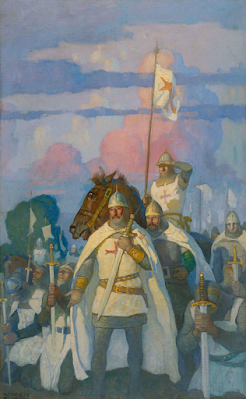So, this list is highly subjective. I haven't read all of these books, and I've also had to eliminate very significant books because of this list's constraints. Occasionally I've picked a less famous book because I believe it to be "better" in some way than the really popular one(s) that were published that year.
I was inspired to make this list because I was contemplating the key Christian books from my own lifetime (born 1989), and it occurred to me that a neat project would be to have a shelf in my study one day filled with only the most important theological books written during my lifetime, one book per year.
I present my list of the most mind-blowing, epoch-making, paradigm-shifting theology (and biblical studies) books of the last 31 years:
The Most Important Theological Books from 1989 - 2021
1989 - Resident Aliens, by Stanley Hauerwas and William H. Willimon
1990 - Method in Theology, by Bernard Lonergan
1991 - The New Testament and the People of God, by N. T. Wright
1992 - The Spirit of Life: A Universal Affirmation, by Jurgen Moltmann
1993 - Theology and Social Theory: Beyond Secular Reason, by John Milbank
1994 - The Disabled God: Toward a Liberatory Theology of Disability, by Nancy Eiesland
1995 - Divine Discourse, by Nicholas Wolterstorff
1996 - Exclusion and Embrace, by Miroslav Volf
1997 - Systematic Theology: Volume I: The Triune God, by Robert Jenson
1998 - The Powers that Be: Theology for a New Millennium, by Walter Wink
1999 - Systematic Theology: Volume 2: The Works of God, by Robert Jenson
2000 - Theology, Music, and Time, by Jeremy S. Begbie
2001 - Jesus, Humanity, and the Trinity, by Kathryn Tanner
2002 - A Theology of the Built Environment: Justice, Empowerment, Redemption, by Timothy J.Gorringe
2003 - The Beauty of the Infinite: The Aesthetics of Christian Truth, by David Bentley Hart
2004 - Scripture and Metaphysics, by Matthew Levering
2005 - The Liberating Image: The Imago Dei in Genesis 1, by J. Richard Middleton
2006 - After the Spirit: A Constructive Pneumatology, by Eugene F. Rogers
2007 - Surprised by Hope, by N. T. Wright
2008 - We Become What We Worship: A Biblical Theology of Idolatry, by G. K. Beale
2009 - Eccentric Existence: A Theological Anthropology, by David Kelsey
2010 - To Change the World, by James Davison Hunter
2011 - The Cross and the Lynching Tree, by James H. Cone
2012 - Paul and Union with Christ: An Exegetical and Theological Study, by Constantine Campbell
2013 - God, Sexuality, and the Self: An Essay ‘On the Trinity,’ by Sarah Coakley
2014 - The Holy Spirit, by Anthony Thiselton
2015 - Crucifixion: Understanding the Death of Jesus Christ, by Fleming Routledge
2016 - One True Life: The Stoics and Early Christians as Rival Traditions, by C. Kavin Rowe
2017 - Awaiting the King: Reforming Public Theology, by James K. A. Smith
2018 - Seeing God: The Beatific Vision in Christian Tradition, by Hans Boersma
2019 - The Mosaic of Atonement: An Integrated Approach to Christ’s Work, by Joshua McNall
2020 - The Rise and Triumph of the Modern Self, by Carl Trueman
2021 - The Same God Who Works All Things, by Adonis Vidu












